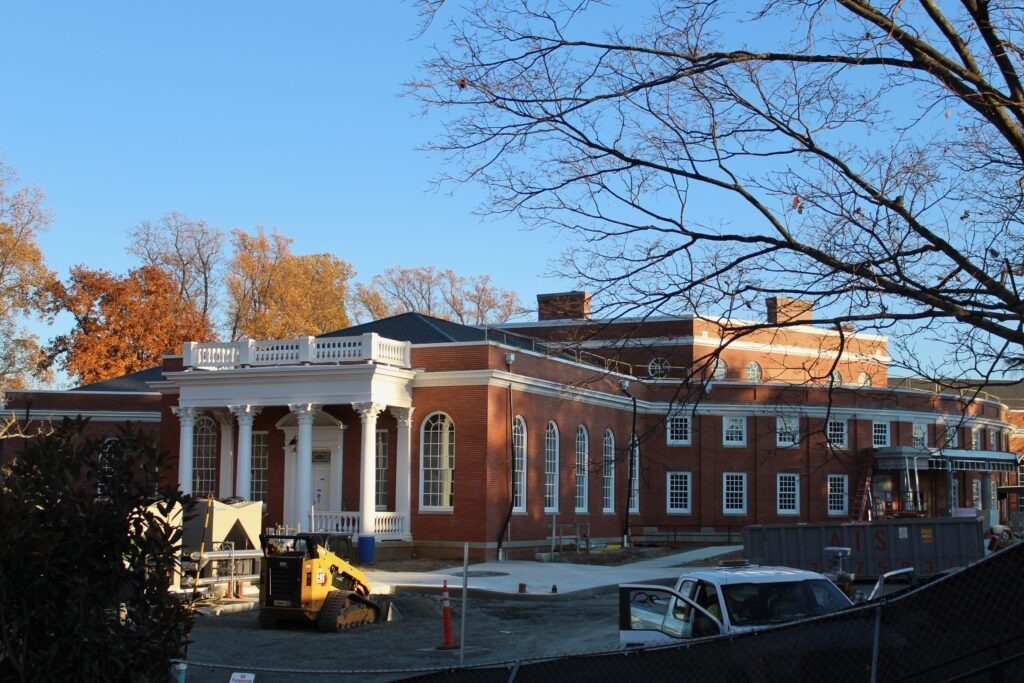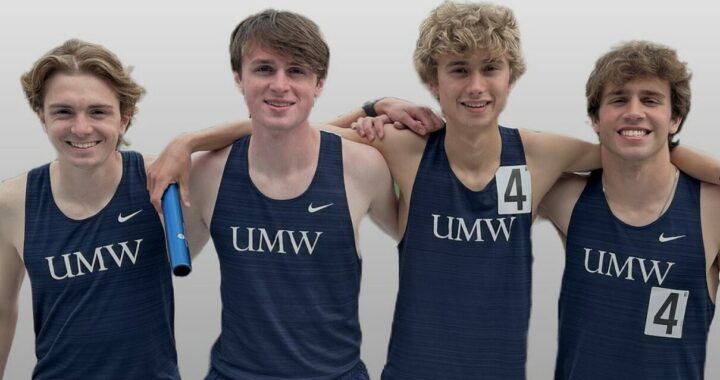UMW needs to properly honor the Seacobecks
5 min read
Seacobeck Hall, the University of Mary Washington's future College of Education. | Kylie Steffenhagen, The Blue & Gray Press
BRADEN ROBERTS
Staff Writer
UMW is not taking enough action to publicize Native American history, culture and diversity, despite being built on Native American land and having a hall named after the Seacobecks, who were a Native American group that lived in the Fredericksburg area before European settlers colonized it. The few ways that UMW offers information about the Seacobecks are not well-advertised to the student body.
UMW has a responsibility to teach students and staff about the origins of Seacobeck Hall’s name, as many do not know about the Seacobeck village. Providing a more robust detailing of the tribe’s history and culture, as well as spreading awareness of that information, is necessary for the University to continue using the name.
Another difficulty in using the Seacobeck name is that it may not be what the Indigenous Peoples referred to themselves as.
“Basically, Secobeck was the name of a town, probably inhabited by people of the Cuttatawomen nation,” said history and American studies professor Jason Sellers. “In working with the present-day Rappahannock tribe recently, we’ve preferred to describe many of these peoples living along the Rappahannock River as ‘Algonquian-speaking communities.’ That reflects their common linguistic and cultural backgrounds.”
Since the Seacobeck community no longer exists, it is impossible to fully know the truth of their name, especially due to how their name was first recorded.
“John Smith would have been the first to map them and record the name for European audiences,” said Sellers. “It’s possible he misunderstood what he was being told—maybe the word described where they lived but wasn’t a name, for instance. But given its similarity to other place names, that it’s clearly an Algonquian word and that Smith was pretty accurately recording a lot of this sort of information, that’s probably what they called themselves.”
This leads to an issue of naming attribution and respect. Mary Washington needs to consider how best to name any building giving homage to the Seacobeck group and rethink whether or not their current efforts are meeting this complex issue.
As a 2019 campus environment committee report states in regards to other building names, “While renaming does not address larger discrepancy issues, it has the possibility of making a significant positive statement to the UMW community, both current and prospective.”
This report contains further information regarding UMW’s policy of renaming buildings, and it also gives context to the history of the Seacobeck people. While it recognizes Seacobeck Hall as a name given to honor the indigenous people who formerly populated this land, merely naming a building after a group does not provide the student body with enough historical context to truly pay tribute to these Algonquian-speaking communities. The information listed in this document needs to be better relayed to the students on campus so they can know the history of the Seacobeck people.
Using the Seacobeck name without properly teaching their culture and history feels like virtue signaling instead of respectfully honoring the group. While the Seacobeck tribe had been removed from this area long before the university was built, their history and contributions should not be forgotten.
“As I understand it, the naming of Seacobeck Hall was done to honor the village of Seacobeck Indians who lived on this land,” said Marion Sanford, the Director of the James Farmer Multicultural Center (JFMC).
However, many students are not aware of the history of this building and may simply assume it is a unique name choice.
“I don’t think many students or even faculty know about Seacobeck’s origins,” said religious studies professor Mary Beth Mathews.
Seacobeck Hall is in a difficult position, as it is intended to honor the Seacobeck tribe, but it does not currently do so, since so few students know who the Seacobecks were. Because of this lack of awareness, using the name comes close to appropriation, as UMW uses it without properly attributing and educating students about the community.
Promoting the history of the building’s name would make UMW’s usage of the Seacobeck name more respectful and help alleviate any confusion about its origins. This would also help spread awareness about Native American culture on campus.
According to Sanford, these misunderstandings extend beyond Seacobeck Hall.
“There is so much misinformation and myths about Native American history—as there are with several other marginalized communities in this country—that need to be corrected, highlighted and taught,” said Sanford.
False beliefs spread due to the fact that many students have very little knowledge about the multiculturalism and depth of society that Native American groups still have to this day. This ignorance is not willful, but springs from a lack of information. UMW does already have a few programs spearheaded by the JFMC that attempt to spread awareness about Native American culture.
Having new courses, events, speakers and groups to discuss Native American culture would be a step in the right direction. This does not imply new mandatory classes and events, but having more optional classes in all departments, taught by professors who specialize in indigenous peoples’ culture would help spread awareness.
“We could do more to raise our course offerings without making them mandatory,” said Matthews. “It would be wonderful if we could raise visibility in the history, literature, linguistics and religious studies departments, to name a few. Students are curious and will want to learn if we have the classes.”
However, if they were to offer these classes, UMW would need to avoid the tendency to treat Native American tribes as if they are an exhibition, instead of a distinct and respected culture.
“It’s a fine line between promoting their presence on campus and treating it as a spectacle,” said Matthews. “[We must] promote awareness and respect, not exoticism.”
Without properly educating the student body about the Seacobecks, the hall that bears the same name is being treated as a spectacle rather than being properly honored.
While it may sound difficult, spreading awareness of Native American communities like the Seacobecks is practical and necessary. UMW already has some programs that reach out to Native American speakers, so the groundwork is there to create more events and classes through indigenous speakers.
“We have hosted many Native American speakers and performers on campus for various events sponsored by the JFMC and/or academic departments,” said Sanford. “We always encourage students and other members of the campus community to attend these events so their understanding of this culture and their history will be broadened.”
UMW must also consider how buildings’ names can feel disrespectful and unwelcoming to Native Americans when they are not given proper attribution.
“Everyone could do more to promote awareness of Native American history and presence,” said Matthews.
Norah Walsh contributed to reporting for this article.











